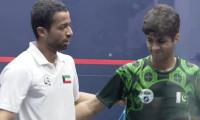The winds of change are blowing fast and loud. The corrupt are being caught and punished, and fresh ideas and a new beginning may just be around the corner.
With the changes that are expected, we need to correct our vision and strategy of socio-economic development by focusing on transitioning into a strong knowledge-based economy. For this, we must formulate an action plan that leads to rapid, sustainable and inclusive socio-economic development.
With the onset of the 4th Industrial Revolution, disruptive innovations are rapidly changing the landscape across the globe. Artificial intelligence is beginning to change the way industries will be run. New materials, such as graphene, which is 200 times stronger than steel and made of pure carbon, are beginning to replace conventional materials. Human organs such as kidneys, livers and jaw bones can now be produced through 3D printing. Moreover, stem cells promise to change the way medicine will be practiced tomorrow as they can repair damaged organs. Regenerative medicine is indeed one of the fastest growing fields of medicine. Advances in genomics are resulting in development of new species of plants and animals.
The manner in which businesses will operate tomorrow is changing rapidly. The world’s largest ride-hailing service, Uber, owns no cars. Facebook, the world’s most popular social media company, creates no content. Alibaba, the world’s largest retailer, carries no stock. Airbnb, the world’s largest accommodation provider, owns no property. Countries investing massively in education and research are forging their way ahead, as innovation and entrepreneurship represent the new world order.
The Royal Society (London), the most prestigious scientific society of the world, has been electing top world scientists as its fellows since 1660. They include luminaries such as Isaac Newton, Charles Darwin and Stephen Hawkins. Out of some 8,000 scientists elected in the last 357 years, only two have been from Islamic countries.
So in this fast changing scenario, in which knowledge and not natural resources have become key drivers of socio-economic development, what should be the vision and strategy for socio-economic development? Firstly, education, science, technology and innovation (ESTI) must be given top national priority through a series of measures, so that we can tap into our real wealth – about 130 million people below the age of 25. This is a huge youth bulge and can be used for our advantage after honing their skill sets. It will become a great national burden if we don’t. The integration of ESTI should be across all sectors of the national economy, ranging from industry and agriculture, to health, communications and social services. This would require a visionary leader to be our next prime minister.
The standard process for preparing a short, medium and long-term roadmap for socio-economic development of any country is through a ‘foresight’ exercise. This was conducted under my leadership in 2005-o6. The resulting 320-page document, covering 13 major sectors of our economy, was approved by the cabinet in August 2007. This document should be considered the core strategic document on how to transition into a knowledge-based economy.
We cannot migrate to a knowledge-based economy without substantially investing in school, college and university level education, as well as in key fields of science and technology. There should be a sizeable allocation for research and development (R&D) – at least three percent of GDP. It should progressively be increased to five percent of GDP. Similarly, investments in education should be at least five percent of GDP, with at least 1.5 percent of GDP being allocated to higher education. However, increased funding without adequate changes in the governance systems would largely be a waste of precious natural resources. We will need to undertake institutional reforms including restructuring institutions of higher learning and research and linking their funding with their performance.
The government can only play an enabling role and produce a highly qualified and skilled manpower. A real impact, however, will only come around if we can link research with private industry to enhance manufactures and exports of high technology products. This could be done by making government funding available for venture capital, entrepreneurship and for hiring highly skilled personnel within private industries. In order to promote manufacturing and export of high technology goods, the government should grant a ‘pioneering status’ to high-tech industries along with suitable long-term, tax-free status. Government insurance should be provided for underwriting risk in new high technology ventures. A revolving innovation fund should be established to support indigenous high technology development in the public and private sector.
But Pakistan cannot build a strong knowledge economy without restructuring school and college level education. A ‘national education emergency’ needs to be declared so that Pakistan’s appalling state of education can be tackled on a war footing. Simultaneously, we should establish top-class research institutions which have internationally recognised, peer-reviewed scholarly capacity for carrying out academic and industrial collaborative research. In this context, developing a critical mass of high quality professionals (scientists, engineers) and technically trained manpower is essential. We have about 270 scientists and engineers per million people where we need to have about 3,000. A ten-fold increase is needed.
Industrial clusters will have to be set up in special industrial zones, accompanied by technical training institutions (the Fachhochschule model) to ensure cost-effective, relevant, demand-driven and collaborative industrial production. The China-Pakistan Economic Corridor (CPEC) should become a ‘knowledge hub’ for such multiple industrial and training clusters focusing on the manufacturing and export of engineering goods, defence products, biotechnology products, pharmaceuticals etc. To promote indigenous technology development, the Planning Commission should link the approval of all foreign assistance and foreign direct investment projects to mandatory transfer of knowledge. This should be done so that at least five percent of the cost of such projects is set aside for training and indigenous capability development, leading to national self-reliance.
It is a shameful reality that Pakistan spends Rs2.6 billion annually on science and technology (budget allocation for 2018-2019) but an amount hundred times higher is being spent on a local transportation scheme. Is this a fair and sensible allocation of our national resources? Something has gone deeply wrong in our national planning. Tony Blair, former British prime minister, was once asked about the three top priorities of his government. His spontaneous response was “Education, Education, and Education”.
The winds of change are blowing – let them take us to new heights.
The writer is the former chairman of the HEC, and president of the Network of Academies of Science of OICCountries (NASIC).
Email: ibne_sina@hotmail.com
Beijing was among first to denounce the tariffs, calling them “unjustifiable” and vowing strong countermeasures
With this unprecedented buildup, Diego Garcia has transformed into ticking time bomb of apocalyptic power
Pakistan is among world’s most climate-vulnerable nations, despite contributing minimally to global emissions
‘Azazeel’ is perhaps the most controversial novel to come out in Egypt this century
Dr Haroon Ahmed was an exceptional person, a precious human being who strived, throughout his long life
Pakistan can't afford another status quo budget so it must be budget of imagination, risk-taking and system-level...







